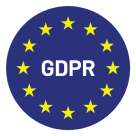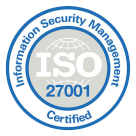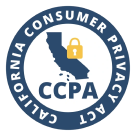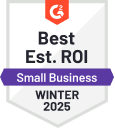16 Best Practices to Master Outbound Call Center Management

Managing an outbound call center isn’t just about making calls anymore. Around 30%* of leads never receive a follow-up email. Imagine this being the reason you leave money on the table, when there are so many smart systems that could automate tasks like these.
Today’s outbound operations face intense pressure to perform. Agents get bogged down by manual tasks instead of having meaningful conversations, while managers juggle quality control with aggressive growth targets. Something has to give.
Smart automation is changing this landscape. When the most successful prospecting calls average 14.3 minutes of quality conversation time, every minute spent on manual tasks is a missed opportunity.* In this article, you’ll discover practical ways to boost productivity and grow your operations without sacrificing the quality of your customer interactions.
Key Takeaways:
- Agents need quality conversation time to drive results, not hours spent on repetitive tasks.
- Build winning routines around data, not guesswork — track, measure, and improve what matters.
- Keep your best performers engaged through smart incentives and clear growth paths.
- Cut the manual work holding your team back with strategic automation and optimized workflows.
- Future-proof your operations with scalable systems and well-trained leaders.
What is Outbound Call Center Management?
Outbound call center management focuses on organizing and optimizing your team’s outreach operations. While inbound call centers react to incoming customer requests, outbound centers actively drive conversations with potential and existing customers through structured calling campaigns.
The key difference lies in the approach. Unlike inbound management which centers on availability and response times, outbound operations prioritize lead quality, contact rates, and conversion optimization. Your team needs different tools, metrics, and strategies to succeed.Modern outbound management goes beyond basic phone calls. Today’s outbound call centers handle everything from lead qualification and sales outreach to outbound sales campaigns and outbound call campaigns. Success depends on balancing automated efficiency with personalized customer interactions.
See why CloudTalk consistently ranks as the top choice for growing support teams.
Outbound Call Center Management Best Practices
Running an outbound call center is complex, but the right management practices make all the difference. Success isn’t just about making more calls—it’s about outbound call management systems that help your team work smarter.
Let’s look at outbound call center best practices that help outbound teams boost efficiency, maintain quality, and drive better results.
Motivation
Outbound calling is demanding work. Even top performers can struggle with motivation when facing constant rejection and repetitive tasks. The right approach to team engagement makes all the difference in maintaining consistently high performance.
Tip 1 – Gamify Performance
Turn daily targets into exciting challenges that keep agents motivated. Set up team competitions around key metrics like:
- Most successful connects in an hour
- Highest quality scores for the week
- Best conversion rate improvements
- Most positive customer feedback collected
Beyond simple leaderboards, create tiered achievement systems. Start agents at “Bronze” level and let them progress to “Silver,” “Gold,” and “Elite” status based on consistent performance. This creates both short-term excitement and long-term engagement goals.
Keep competitions fresh by rotating focus areas monthly. This week might highlight call quality scores, while next week emphasizes successful demos scheduled.
Use your call management system to automatically track and display progress, removing any doubt about standings.
Tip 2 – Build Team Culture
Strong outbound teams thrive on more than just metrics and targets. They’re built on a foundation of shared purpose, mutual support, and continuous improvement. This requires intentional culture-building at every level.
Start with clear performance expectations and advancement paths. When agents understand how their work impacts business goals and see opportunities for growth, they’re more likely to invest in long-term success. Support this framework with structured knowledge sharing between experienced and newer team members.
Create channels for collaboration that make sense for your operation’s size and setup. Whether your team works in-office, remote, or hybrid, consistent communication helps maintain connection and share winning strategies across the organization.
Tip 3 – Develop Skills
Effective outbound teams evolve beyond basic scripts to master consultative conversations. Structure your training program around progressive skill development – from foundational call flow to advanced objection handling. The key is building competence systematically rather than overwhelming agents with too much too soon.
Modern call management solutions provide rich data on agent performance patterns. Use these insights to identify specific areas where team members need support, then deliver targeted coaching that addresses those gaps. This data-driven approach ensures training directly impacts performance metrics.
Complement live coaching with AI-powered call analysis to spot improvement opportunities and validate training effectiveness through measurable results.
Tip 4 – Measure Engagement
High-performing outbound operations treat engagement as a measurable metric, not a matter of intuition. Monitor key indicators like call quality consistency, average handle times, and system utilization patterns to spot potential issues early. Sudden changes in these metrics often signal engagement challenges before they impact revenue.
Build a feedback loop that combines performance data with regular check-ins. This gives you both quantitative and qualitative insights into team health, helping you maintain peak productivity while preventing burnout.Configure your analytics dashboard to track engagement metrics automatically, setting up alerts for patterns that might indicate motivation issues needing attention.
Motivate Your Agents Instantly!
Performance
The best outbound teams don’t just make calls—they constantly refine their approach based on data and feedback. Smart performance tracking helps you spot opportunities, solve issues early, and keep your team operating at peak efficiency.
Tip 5 – Track Key Metrics
Successful outbound operations focus on metrics that directly impact revenue. While many teams track basic call volumes, winning organizations dig deeper into performance indicators that reveal real opportunities:
- Conversation Quality Metrics
- Talk-to-listen ratios that indicate healthy dialogue
- First-call resolution rates
- Key message delivery success
- Follow-up commitment rates
- Efficiency Indicators
- Time to first conversation
- Speed to lead response
- Call outcome patterns by time of day
- Contact rate per list segment
Use your call management system to track these metrics automatically, creating dashboards that highlight areas for immediate improvement while revealing longer-term trends.
Tip 6 – Monitor Live Calls
Strategic call monitoring helps identify winning patterns while they’re happening. Focus monitoring sessions on specific goals — whether that’s reviewing new script effectiveness, evaluating handling of common objections, or validating training impact.
The key is providing feedback that agents can implement immediately. Focus on one or two actionable insights per session rather than overwhelming agents with a complete call breakdown. This targeted approach leads to incremental improvements that compound over time.
Tip 7 – Automate Wisely
The most successful outbound teams automate strategically, not blindly. Focus your automation on tasks that steal time from actual customer conversations — manual dialing, data entry, and follow-up scheduling. When your call center solution handles these routine activities, agents can focus on what they do best: building relationships and closing deals.
Look for automation that enhances rather than replaces human interaction. Smart dialers can screen out unproductive numbers, while automation tools manage follow-up scheduling and data entry.
Tip 8 – Share Best Practices
Transform individual excellence into team-wide performance gains. Your top performers have developed approaches that work — the challenge is scaling these winning strategies across your organization.
Create a systematic way to identify what makes your best calls successful. Use call analytics to spot patterns in high-performing conversations, then build these insights into your team’s standard practices. This data-driven approach to sharing best practices ensures you’re replicating what actually works, not just what sounds good in theory.
Growth & Scaling
Scaling outbound operations isn’t just about adding more seats. Smart growth requires systems that expand smoothly without sacrificing quality or team performance.
Tip 9 – Scale Your Tech
Growing outbound teams need technology that scales on demand. But rapid expansion often reveals the limitations of basic calling tools. Look for cloud-based solutions that offer seamless user scaling and feature activation without disrupting your operations. Your tech stack should help accelerate growth, not limit it.
Most importantly, ensure your platform can handle increasing call volumes while maintaining quality. Deep integrations and open APIs keep your essential tools working together as you scale.
Discover the Future of Conversations
Tip 10 – Develop Leaders
Sustainable growth depends on strong team leadership. Identify agents who excel not just at hitting targets, but at elevating their peers’ performance. These natural leaders often emerge during team challenges or coaching sessions.
Focus their development on translating individual success into team performance. The best outbound managers understand both the metrics that drive results and the human elements that keep teams motivated.
Tip 11 – Align Your Goals
Growing outbound operations need clear alignment between daily activities and business objectives. Break down your targets into measurable metrics that teams can track and influence. This creates a direct line of sight from individual calls to company success.
Use your analytics dashboard]to monitor how scaling impacts key performance indicators. This helps maintain quality standards while pursuing growth targets.
Tip 12 – Build Smart Systems
Document everything as you grow. Create clear playbooks for onboarding, call handling, and problem-solving. When processes are well-documented, new team members can get up to speed quickly while maintaining consistent quality standards.
Create systematic feedback loops that help refine these processes. When your call monitoring system identifies a particularly successful approach, make it easy for that knowledge to spread across teams quickly.
Efficiency
Every minute your agents spend on manual tasks is time they could spend having meaningful conversations. The right mix of tools and processes helps eliminate common bottlenecks and maximize productive calling time.
Tip 13 – Perfect Your Scripts
Call scripts shouldn’t feel robotic. Your agents need the freedom to build authentic connections while staying on-message. Create dynamic frameworks that adapt to different customer scenarios — from quick initial contacts to in-depth discovery calls.
Your call flow designer should support this flexibility. Build branching paths that help agents navigate common objections while keeping conversations natural. The goal isn’t to script every word but to ensure consistent messaging across your team’s unique communication styles.
Tip 14 – Cut Idle Time
Stop letting your team waste time on unanswered calls and busy signals. A power dialer eliminates the gaps between conversations, automatically connecting agents with their next prospect the moment they’re ready. Smart scheduling logic ensures these calls happen when prospects are most likely to engage.
Monitor your connection rates across different times and regions. Use these insights to optimize your calling windows and maximize every hour of agent time.
Ready For The Next Generation of Dialers?
Tip 15 – Master Your Lists
Not all leads are created equal. Start by segmenting your contacts based on value potential and engagement history. Then use automated call distribution to match leads with the agents best equipped to handle them – whether that’s by industry expertise, product knowledge, or past success patterns.
Keep your lists dynamic, automatically adjusting priority based on interaction history and response patterns. This ensures your most promising opportunities always get timely attention.
Tip 16 – Streamline Workflows
The best outbound processes remove friction between agents and prospects. Connect your call management system with your CRM to eliminate duplicate data entry and ensure every team member works from current information. Create workflows that automate post-call tasks, letting agents move smoothly from one meaningful conversation to the next.
Focus on reducing the steps between identifying an opportunity and acting on it. Every click saved is more time for valuable customer interaction.
From Manual to Magnificent: Take Action Today
The landscape of outbound calling keeps evolving. But one thing remains constant: success comes down to making every conversation count. Whether your team handles dozens or thousands of calls daily, the principles we’ve explored help you maximize each interaction.
Remember, great outbound operations aren’t built on technology alone. They thrive on the perfect balance of smart automation, motivated agents, and scalable processes. Start by tackling your biggest pain point — perhaps it’s manual tasks eating up agent time, or inconsistent performance across teams.
Take that first step. Pick one strategy from this guide and implement it this week. Then watch how small improvements in how your team works compound into significant gains in productivity and results.
Start managing your outbound call center like a pro!
Source:
FAQs
How do I manage outbound calls?
Use automation, track key metrics, and implement structured workflows to optimize efficiency and improve agent performance.
What are the KPIs for outbound calls?
Key KPIs include contact rate, conversion rate, talk time, call volume, first-call resolution, and agent productivity.
What is outbound call handling?
It refers to managing outgoing calls efficiently, ensuring quality conversations, and using automation for better engagement.
What is an outbound call role?
An outbound call agent contacts leads or customers for sales, support, surveys, or follow-ups to drive engagement.
What industries typically use outbound call centers?
Industries like sales, healthcare, finance, telecom, and market research heavily rely on outbound call centers.
What does call center management do?
It oversees operations, agent performance, training, and call strategies to optimize efficiency and results.
What services and tools are included in an outbound call center solution?
Includes auto-dialers, CRM integration, analytics, call scripting, reporting tools, and performance tracking.





















